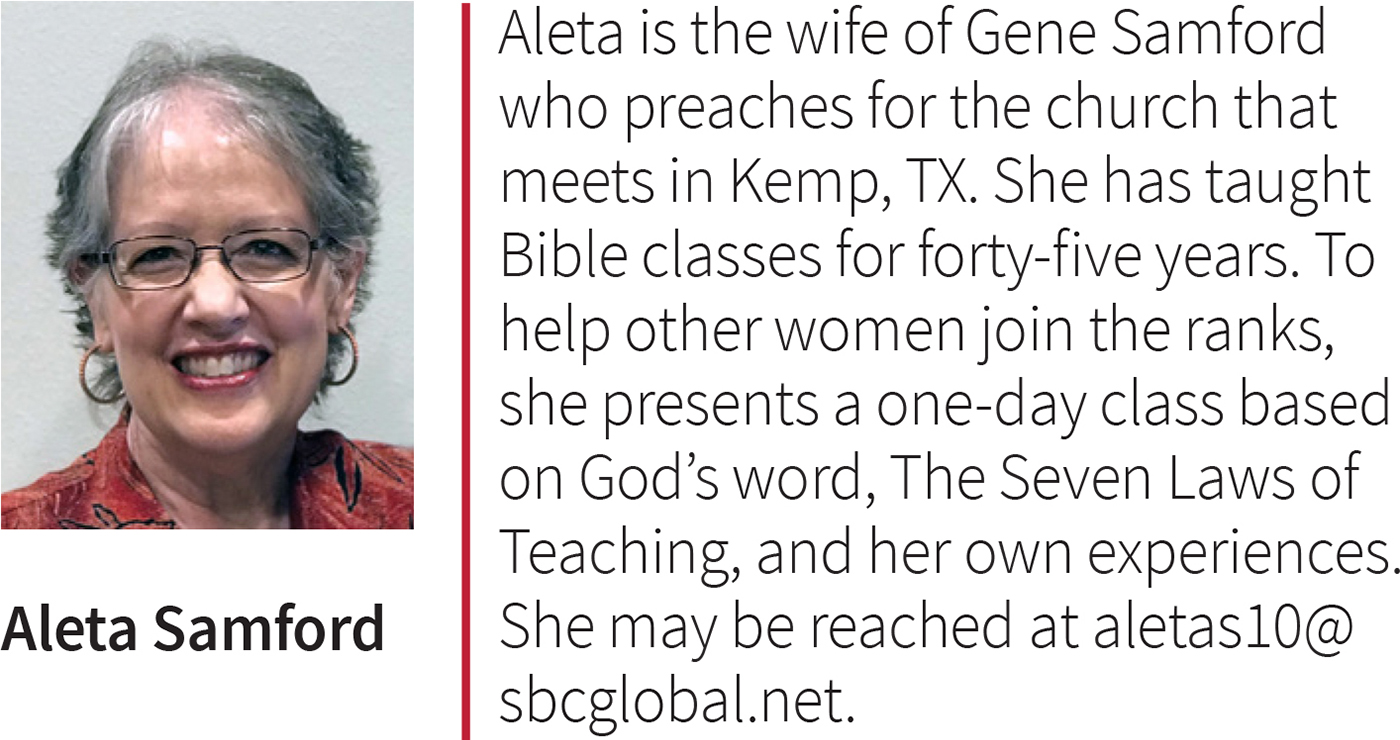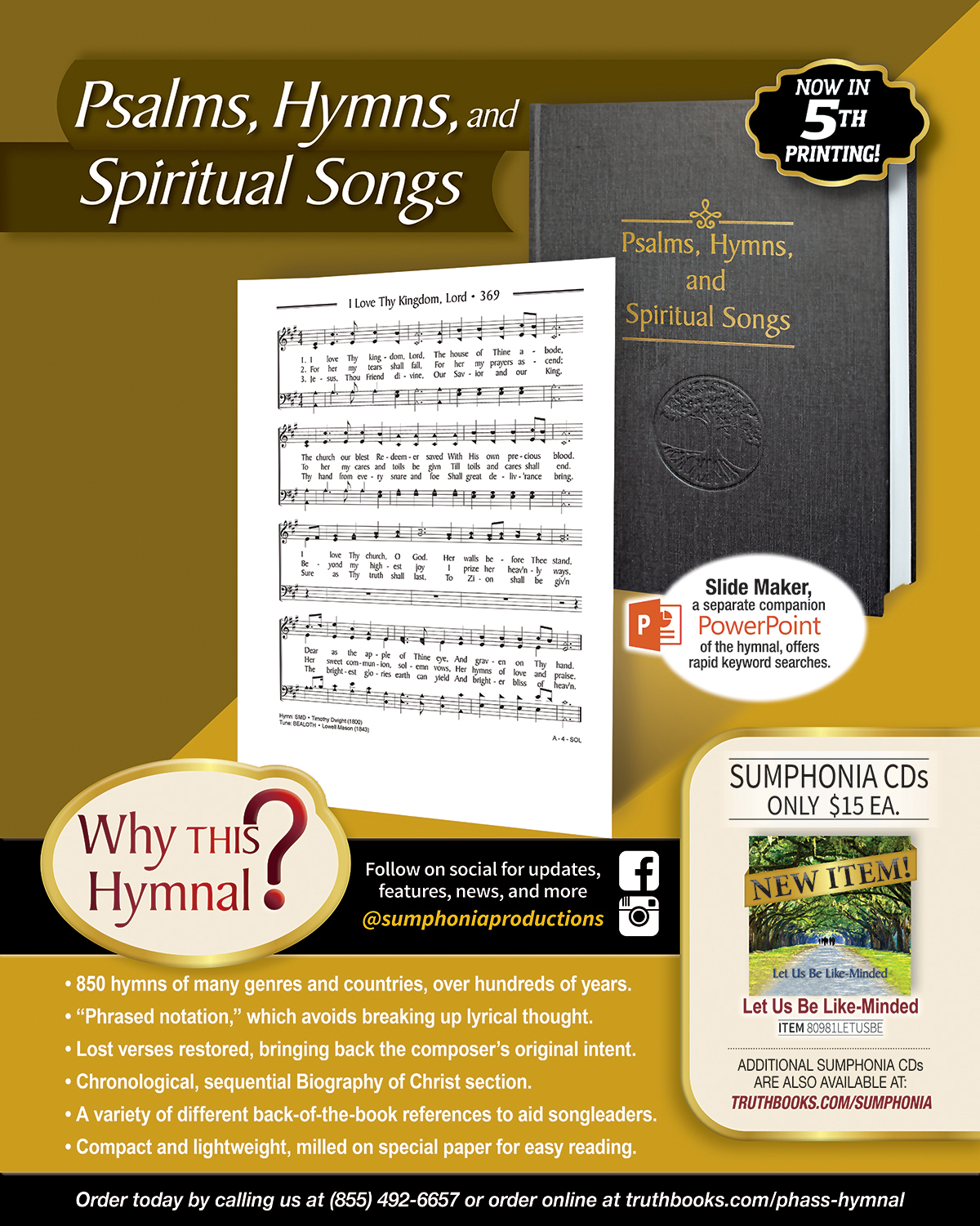
by Aleta Samford
Synopsis: As stewards of God's word, we should endeavor to help our students learn how to learn. Appealing to the senses is an effective method of drawing them into the biblical story and arousing their curiosity.
Previously, I stressed the importance of making investigators of our students by training them to find the facts of God's word themselves. However, is fact-finding the only mission of the investigator? No, students must do more: they must make practical, individual application.
Admittedly, this is the most challenging part from the teacher's standpoint, but if we have trained ourselves to ask constant questions of our students which they must answer, their curiosity will lead them to ask, "Do I believe these facts? Why, or why not?" Be aware of those moments in your students, taking care to let them continue to talk it out. Doing all the work yourself by lecturing or moving quickly to cover the material will end all questions, including all thinking.
Another method I use to engage and exercise my students' curiosity and senses is to have them pretend they can see, hear, smell, taste and feel what is going on with Bible characters. An incident I like to share happened with a little girl named Sarah. I had asked her to pretend to be Jochebed, baby Moses' mother, and to see and hear what was going on around her. I asked her to tell me how she felt, knowing her baby might be snatched away and put to death. She said, "Sad." When I said, "What else?" she said, "Scared!"
I pushed: "Even though you feel sad and scared, what do you do next? What did Jochebed do?" When Sarah paired her senses with the facts of the story, Jochebed provided her with an image of someone who manifested courage in the face of fear. Then, we made the ultimate connection: Jochebed could only do this by trusting in the living God. Engaging Sarah's senses helped her take a personal walk through the Scriptures and ultimately see God as the adhesive force. "Oh, taste and see that the Lord is good; blessed is the man who trusts in Him!" (Ps. 34:8).
This and so many other Scriptures reveal the nature of the learning process. God, the Father, our Teacher, provides for our learning: "Grace and peace be multiplied to you in the knowledge of God and of Jesus Christ our Lord, as His divine power has given to us all things that pertain to life and godliness, through the knowledge of Him who called us by glory and virtue" (2 Pet 1:3). "All Scripture is given by inspiration of God, and is profitable for doctrine, for reproof, for correction, for instruction in righteousness, that the man of God may be complete, thoroughly equipped for every good work" (2 Tim 3:16-17).
We, the students, must do something with that: "Therefore, my beloved, as you have always obeyed, not as in my presence only, but now much more in my absence, work out your own salvation with fear and trembling" (Phil. 2:12). Paul said, "Exercise yourself toward godliness. For to this end we both labor and suffer reproach, because we trust in the living God, who is the Savior of all men, especially those who believe" (1 Tim 4:7, 10).
As teachers, we want our students to appreciate that God's word is meant to be a life-long companion, intended to cultivate thirst and curiosity every moment of their lives. We want them to develop the habit of continually asking who, when, where, what, why, and also the wherefore of the text. We want them to discover how to investigate and learn.
Parents spark interest in their little ones for new things by asking them thousands of questions. Later, the child begins to ask his parents countless questions, sometimes to the point of distraction! However, the wise parent knows they know the answer and will finally say to them, "You tell me!"
This is how Jesus forced His listeners to think. Luke 10:25-26, says, "Behold, a certain lawyer stood up and tested Him, saying, 'Teacher, what shall I do to inherit eternal life?' He said to him, 'What is written in the law? What is your reading of it?'"
Jesus did not answer the lawyer's question; he of all people should have known the answer. Basically, Jesus said, "What does the text say? You tell me!" 
Gregory, John Milton. The Seven Laws of Teaching. Grand Rapids, MI: Baker Book House, 1884, 1986.


